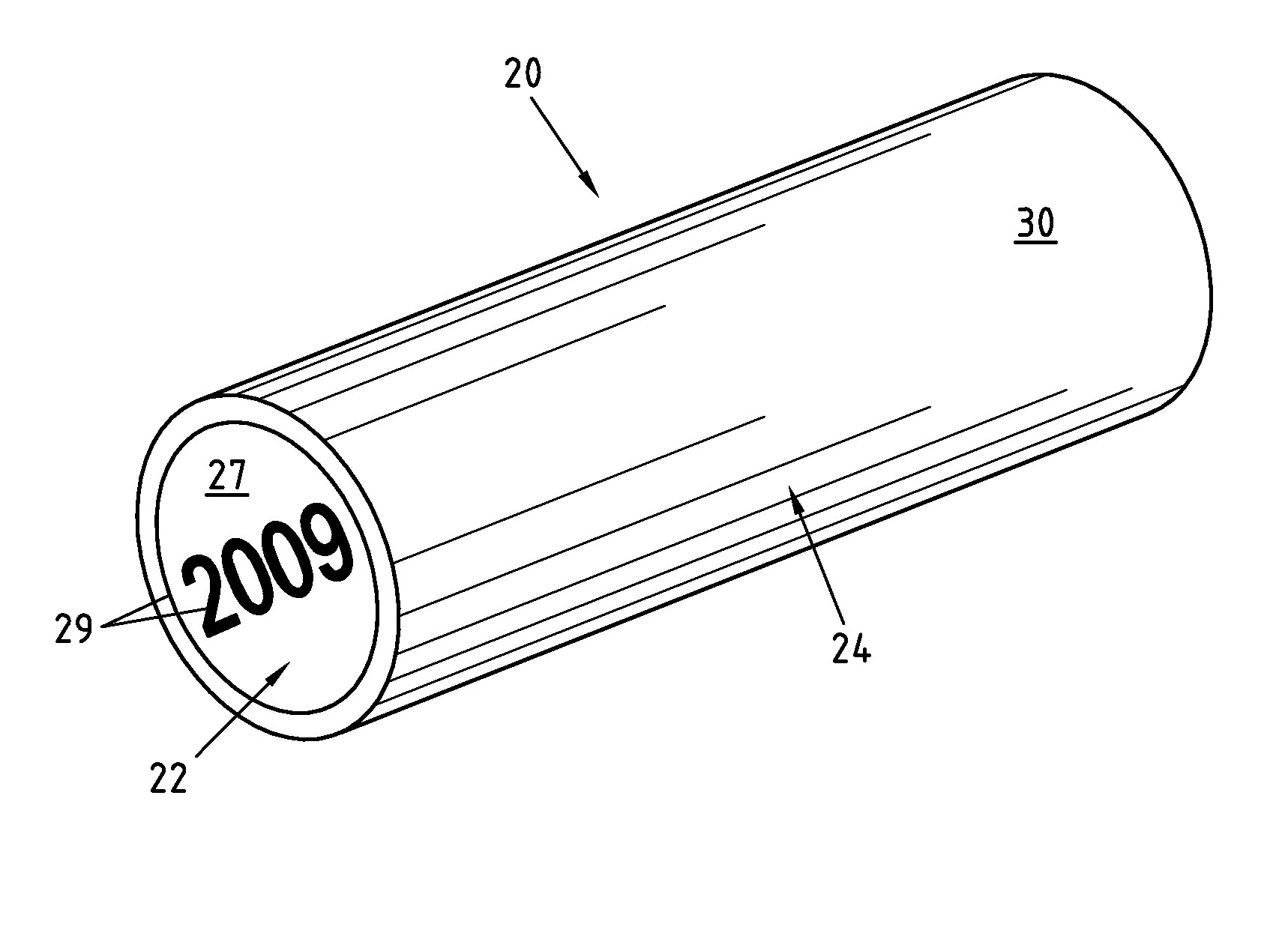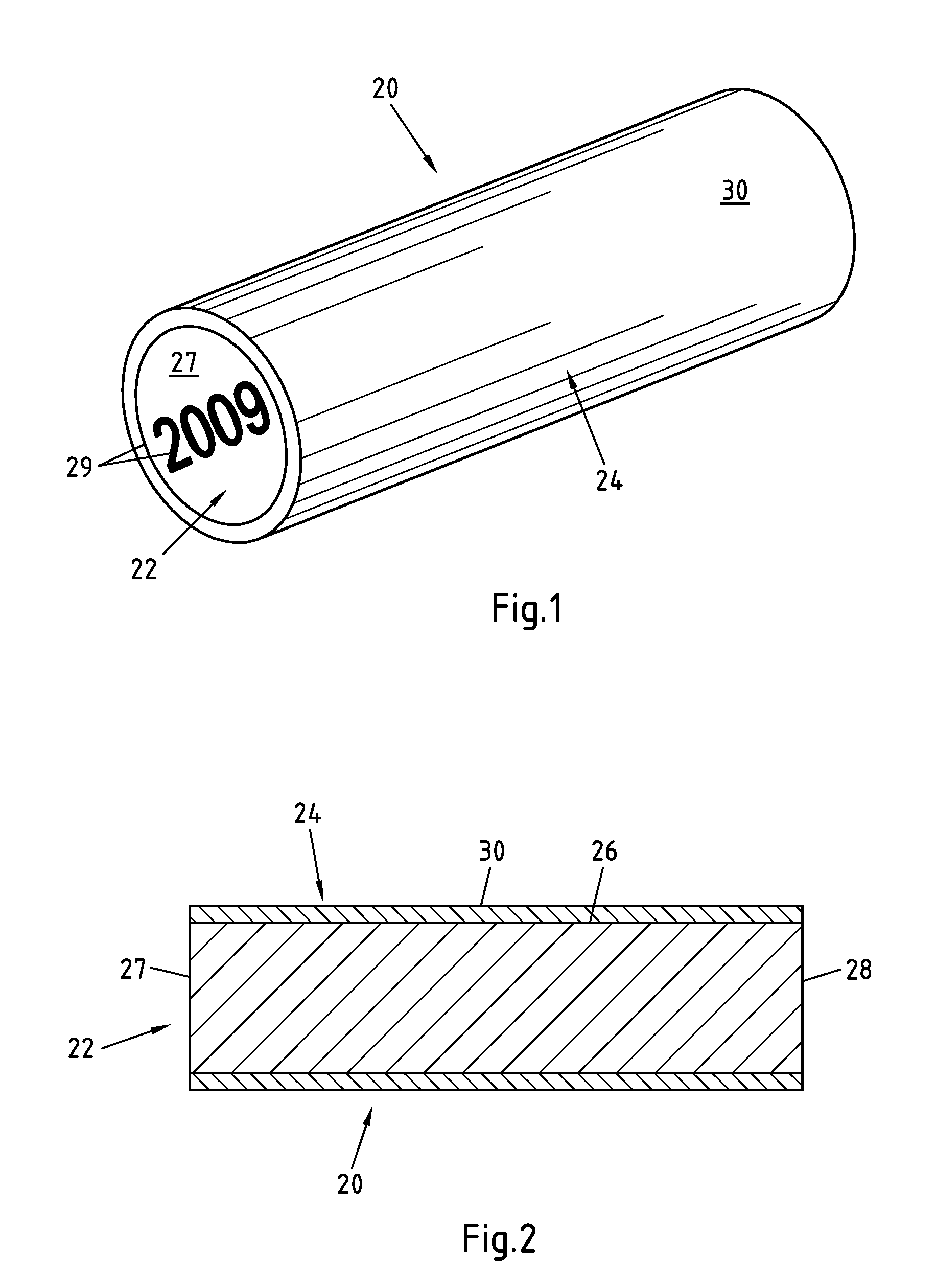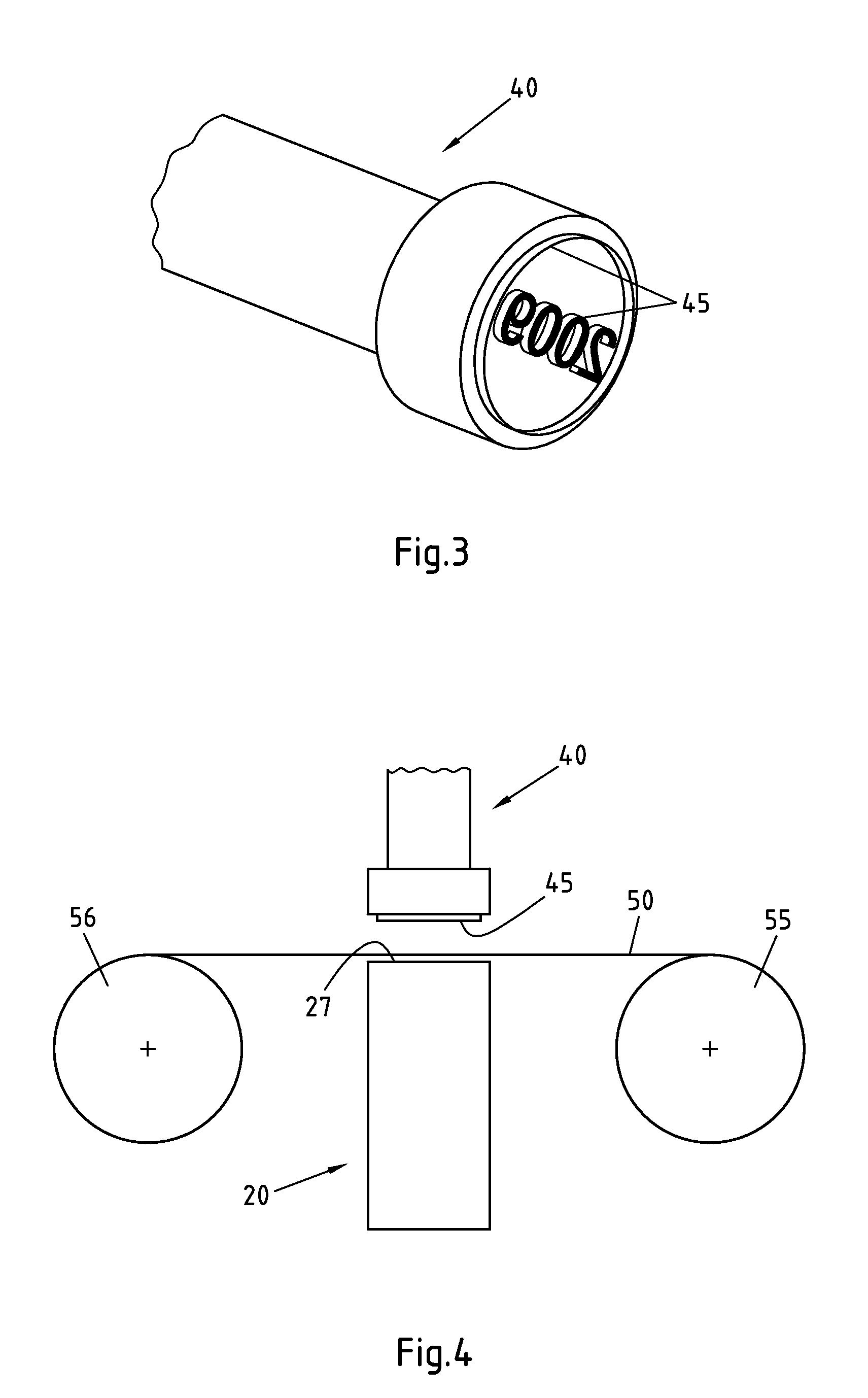Closure for a product retaining container
a technology of product retaining containers and closures, applied in the field of closures or stoppers, can solve the problems of bottle closures, leakage or tainted wine, and the manner in which the closure is inserted
- Summary
- Abstract
- Description
- Claims
- Application Information
AI Technical Summary
Benefits of technology
Problems solved by technology
Method used
Image
Examples
Embodiment Construction
[0021]The present disclosure provides for a method of applying indicia on at least one of the two substantially flat terminating surfaces forming the opposed ends of a closure for a product retaining container, said closure having a substantially cylindrical shape and being constructed for being inserted and securely retained in a portal forming neck of the container, wherein said method comprises the following steps:[0022]A. providing a stamping foil comprising at least a carrier film and a decorative layer;[0023]B. providing a stamping tool that is patterned so as to form a negative image of said indicia by raised regions on the surface of the stamping tool;[0024]C. placing said stamping foil on top of or slightly above said terminating surface of said closure with said decorative layer facing towards said flat terminating surface, whereby said flat terminating surface is at least partially covered by the stamping foil;[0025]D. pressing said stamping foil against said terminating ...
PUM
 Login to View More
Login to View More Abstract
Description
Claims
Application Information
 Login to View More
Login to View More - R&D
- Intellectual Property
- Life Sciences
- Materials
- Tech Scout
- Unparalleled Data Quality
- Higher Quality Content
- 60% Fewer Hallucinations
Browse by: Latest US Patents, China's latest patents, Technical Efficacy Thesaurus, Application Domain, Technology Topic, Popular Technical Reports.
© 2025 PatSnap. All rights reserved.Legal|Privacy policy|Modern Slavery Act Transparency Statement|Sitemap|About US| Contact US: help@patsnap.com



